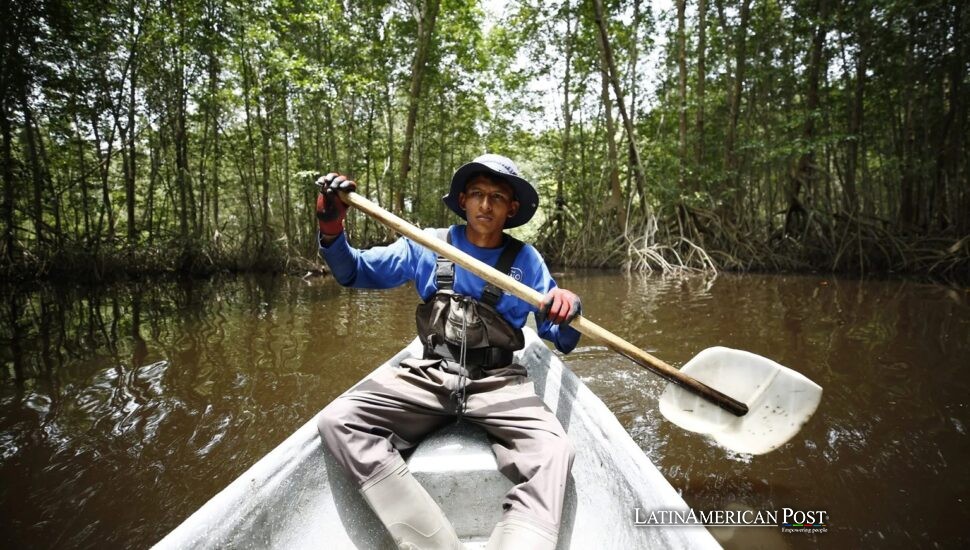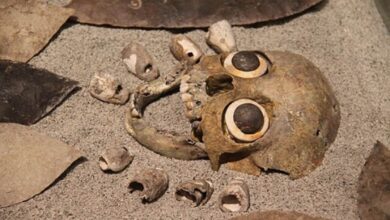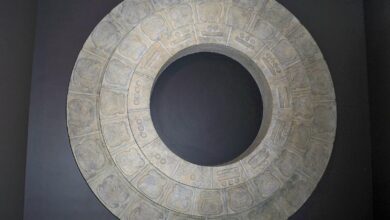Belize’s Mangrove Secrets: How Invisible Maya Homes Are Rewriting Coastal History

Beneath the still, green surface of a Belizean lagoon lies a miracle of survival. The Classic Maya once built wooden homes, salt kitchens, and workshops here—structures so fragile they should have vanished centuries ago. Yet deep inside the mangrove peat of Cho-ok Ayin, those lives endure, their ghostly posts and floors preserved in an oxygen-starved world where time slows to a crawl. And what they reveal may force archaeology to rewrite how—and whom—it counts.
Invisible Architecture, Indispensable People
For decades, archaeologists have read the story of the Maya through stone temples, terraces, and pyramids that refuse to die. Lidar scans make their outlines glow beneath the jungle, feeding the idea of a civilization defined by what it built to last. However, the Maya world was not limited to limestone. Along the southern coast of Belize, thousands of families built their lives from wood, palm, and clay—materials that usually rot, burn, or disappear, leaving no trace of their existence.
Cho-ok Ayin changes that. In research published in Ancient Mesoamerica, archaeologists Dr. Heather McKillop and Dr. E. Cory Sills uncovered an entire Late Classic household compound, preserved beneath the peat of Punta Ycacos Lagoon. “The preservation of the wooden buildings and wooden objects at the submerged Classic Maya sites in Punta Ycacos Lagoon has not been found elsewhere,” McKillop told Phys.org.
The site features four buildings—one residence and three salt kitchens—spanning 32 by 27 meters and supported by 56 hardwood posts and three palmetto uprights. It’s humble, yes, but also startlingly intact. “The conditions for preservation are ideal along the southern Belize coast, where mangrove peat deposition is as much as 10 meters below the sea floor,” McKillop explained to Phys.org. In the lagoon’s dark anoxia, wood does not rot—it remembers.
Archaeologists refer to places like this as “invisible sites.” But that invisibility says more about their methods than about the people who lived there. When survey tools privilege stone, whole communities vanish. The families who boiled brine, built homes on poles, and traded salt for obsidian become statistical zeroes. Cho-ok Ayin is proof that those zeros were never empty.
Salt, Science, and a Lagoon Economy
The people of Cho-ok Ayin lived by the principles of chemistry. Between A.D. 550 and 800, they mastered the slow transformation of seawater into currency. Salt production may sound ordinary, but in the Maya world, it was everything—encompassing preservation, trade, medicine, and ritual. The families here collected brine, filtered it through salt-rich sediments, funneled it into clay basins, and boiled it over wood fires until it crystallized.
At Cho-ok Ayin, those clay funnels still sit where they were used. “Salt was either transported as loose salt in containers or hardened into salt cakes and carried in pots,” McKillop told Phys.org, comparing it to modern families in Sacapulas, Guatemala, who still break vessels to carry solid cakes of salt uphill.
It’s a vision of everyday life that smells of smoke and sweat—a domestic workshop where fires hiss and pots cool, children gather driftwood, and adults barter finished cakes across the lagoon. The salt was traded inland for Belizean Red pottery, obsidian from Guatemala’s highlands, and fine chert tools from the north. What archaeologists once labeled a backwater now appears to be an industrial hub connected to a vast economy.
And here lies the more profound revelation: these “invisible” coastal producers were not marginal peasants but the hands that fed the Maya heartland. The obsidian knives found in elite tombs, the cured meat at royal banquets—all trace back to families like the one at Cho-ok Ayin. By counting only the stone monuments of the powerful, archaeology has missed the wooden foundations of everyone else.
Method Is Message: Learning to See What Hides
Lidar revolutionized Maya studies by cutting through the jungle canopy, but even lasers cannot pierce peat. Cho-ok Ayin came to light through a humbler method: a flotation survey. Archaeologists stirred the lagoon’s soft floor and watched what rose to the surface—wood fragments, post stubs, the fragile punctuation marks of an erased community.
This patience paid off. It revealed a world invisible to satellite scans and blind to drones. The message is clear: discovery now depends less on technology than on humility—on letting the site teach researchers how to look.
The discovery also exposes a bias in the timeline itself. The late periods of Maya civilization are the easiest to find because they built with stone. But what of the earlier, quieter centuries when knowledge, migration, and industry took shape in wood and clay? How much history have we mistaken for absence simply because it refused to fossilize?
Cho-ok Ayin’s four buildings may have sheltered only five or six people, but multiplying that pattern along Belize’s coast shifts the picture from isolation to density—a living, breathing shoreline of salt workers whose labor powered inland cities. The lagoon’s silence has been misread as emptiness. It is, in fact, an archive whispering to anyone willing to listen beneath the surface.
Rethinking Value, Rewriting Maya History
It’s easy to praise the “complexity” of the Maya and then point to temples. Cho-ok Ayin asks for a different kind of admiration: the complexity of craft, not monumentality. The genius of these families lay in logistics, not architecture. They balanced brine levels, managed wood supplies, tracked trade routes—all without the permanence of carved stone to announce their skill.
Their story is also a warning. If archaeology continues to chase spectacle, it will continue to erase the very people whose labor sustained the civilization it admires. “Invisible” is a misnomer; these households were essential. They built in materials that honored the rhythm of their environment rather than defying it.
There’s also an environmental lesson to be learned. The same sea-level rise that now threatens Belizean coasts once created the conditions that preserved these remains. The mangrove peat that shields the posts from decay was formed through slow flooding and the accumulation of sediment. The climate is forcing the rewriting of modern coastlines, which are also erasing archaeology’s most delicate record. Protect the mangroves, and you protect the memory they hold.
As McKillop and Sills have shown, the Classic Maya were not just architects of stone cities—they were engineers of ecosystems, bending water, wood, and salt into livelihood. Their homes may have melted into the lagoon, but their work endures, surfacing one post at a time.
Also Read: Doctors of the Amazon: Heal Teeth, Restore Sight, and Defend the Forest with AI and 3D Printers
When we picture the Maya, we often envision their temples and stelae. But now we must also picture a wooden house on stilts, smoke drifting over brine pots, children wading at the edge of a mangrove lagoon. That is the true face of the coast—the Maya world seen not from its pyramids, but from its kitchens.





